metals: light gauge steel framing
1/24
There's no tags or description
Looks like no tags are added yet.
Name | Mastery | Learn | Test | Matching | Spaced |
|---|
No study sessions yet.
25 Terms
light gauge steel framing members
steel components are cold-rolled from steel sheet
light gauge steel framing uses
for structural, loadbearing framing and
exterior wall framing (subject to wind loads)for interior non-load bearing walls
c-studs and joists
wall studs, floor joists, roof rafters, etc.
depth: 1-5/8 to 12 in.
width: 1-1/4 to 2-1/2 in.
metal thickness” 0.018 to 0.097 in. (18 to 97 mils)
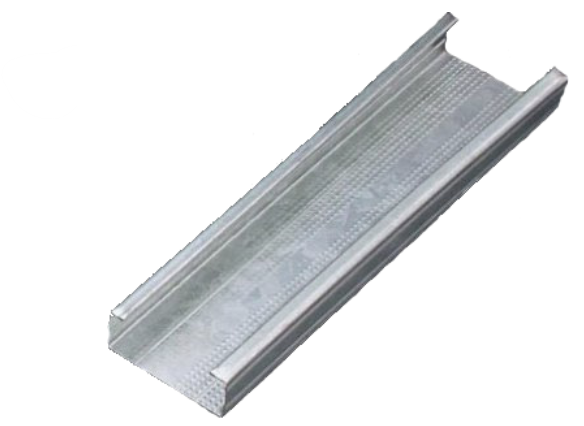
tracks
top and bottom of wall framing; ends of floor framing
analogous to wall plates and rim joists in light wood frame construction
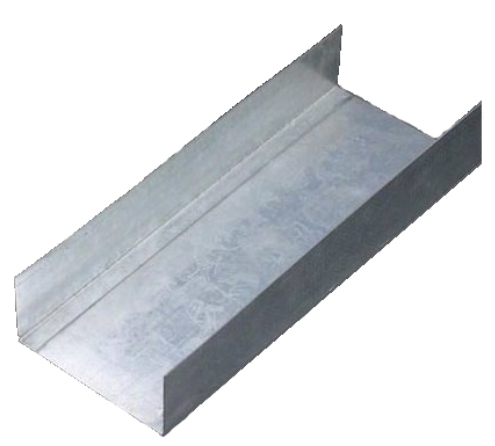
channels
bridging, blocking, and other reinforcing and bracing
also called cold-formed channels
standard sizes:
depth: ¾ to 2-1/2 in.
width: ½ in.
furring
used for bridging, backing, furring
also called hat channels
standard sizes
depth: 7/8 or 1-1/2 in.
width: 1¼ in. at raised surface, 2½ in. at base
L-headers
used for simplified header construction in bearing wall openings.
break-formed angles (sheet metal bent in fabricator's shop to the specified size)
header (top), jam (sides), sill (bottom)
framing accesories
various sheet metal clips, stiffeners,
bracing, and hangers are used to make
connections and reinforce framing
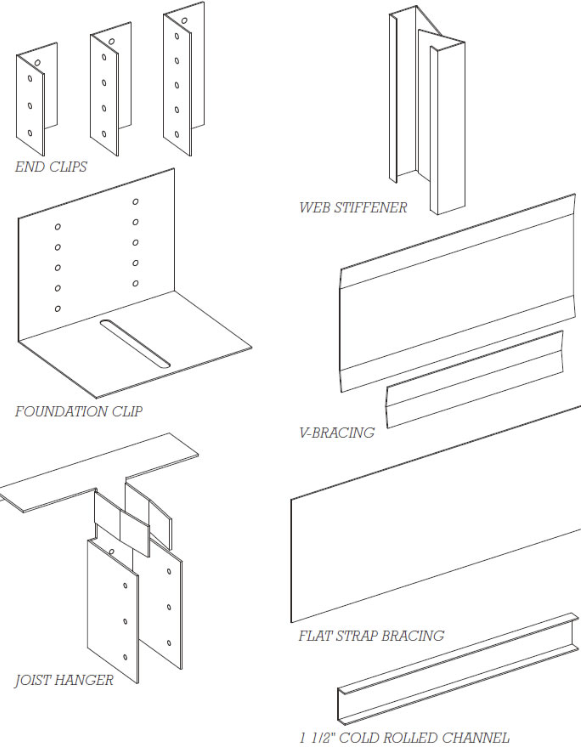
slip track
top track with extended legs and slotted holes
allows fastening of nonloadbearing studs to track while permitting deflection in the track
deflection in the slab above does
not impart unintended loads into
the wall framing.
sheet metal thickness
thicker members are stronger and stiffer, but also heavier and more expensive
traditionally expressed as gauge (or gage), with lower numbers corresponding to thicker metal
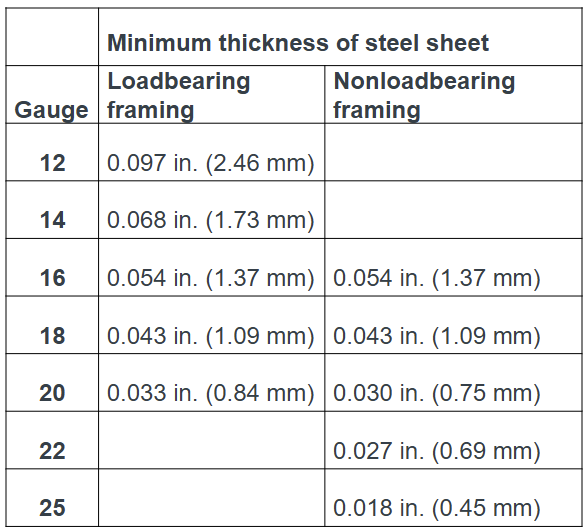
cutting light gauge sheet metal
tin snips (aviator's snips): quiet,
clean, slower than power methodspower shears
power saw with abrasive or
carbide-toothed bladetorch cutting
brake lathe
fastening
self-drilling, self-tapping screws are most common
crimping tools mutually deform parts to be joined
nail-like pins are power-driven
welded joints can have higher strengths but are more labor intensive to make than mechanically fastened joints
welding is best suited to thicker sheets that are less susceptible to melt-
through (burn through) than thinner sheets
framing
framing methods parallel wood light frame platform construction
steel joists spaced from 12 to 24 in. O.C. (on centre) are framed into tracks or
channels
anchorage detail: wall to foundation
in pic
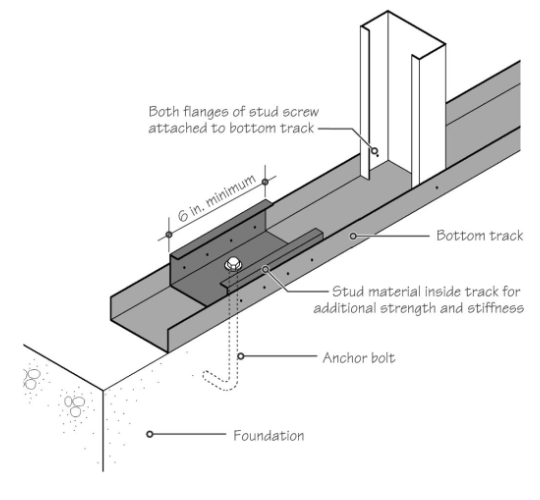
configuration at corner
in pic
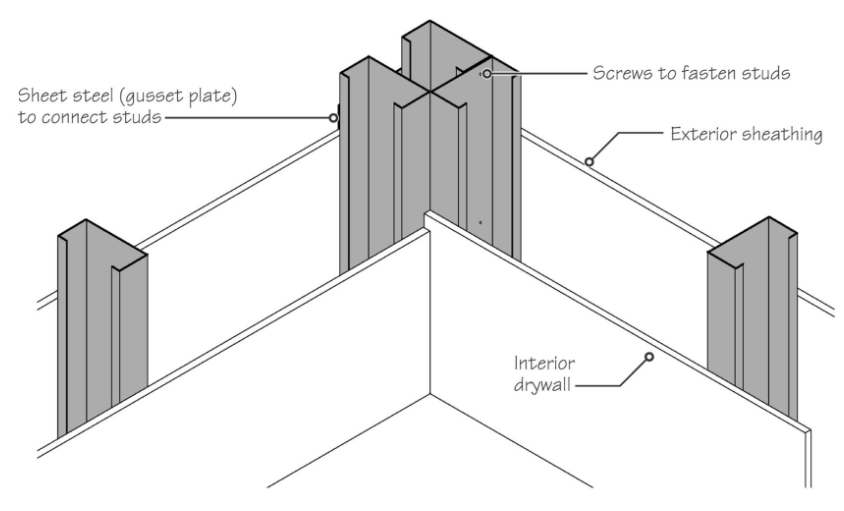
intersecting tracks at top corner
in pic
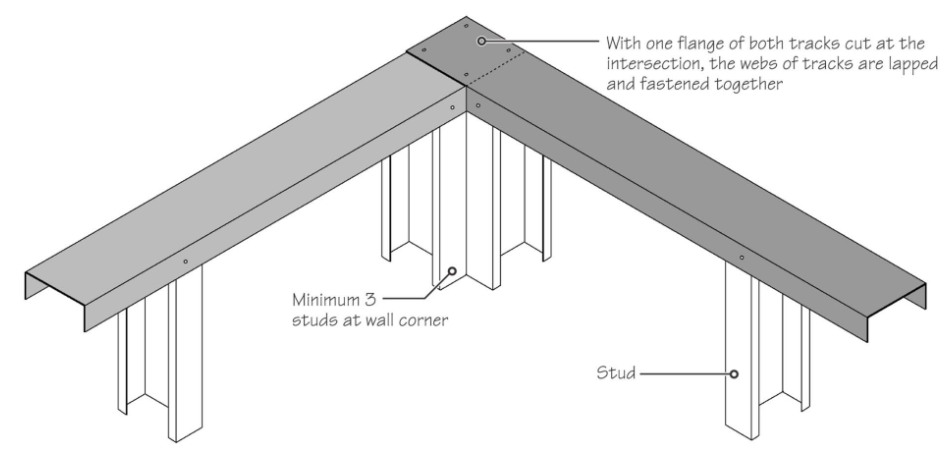
details: header and sill
in pic
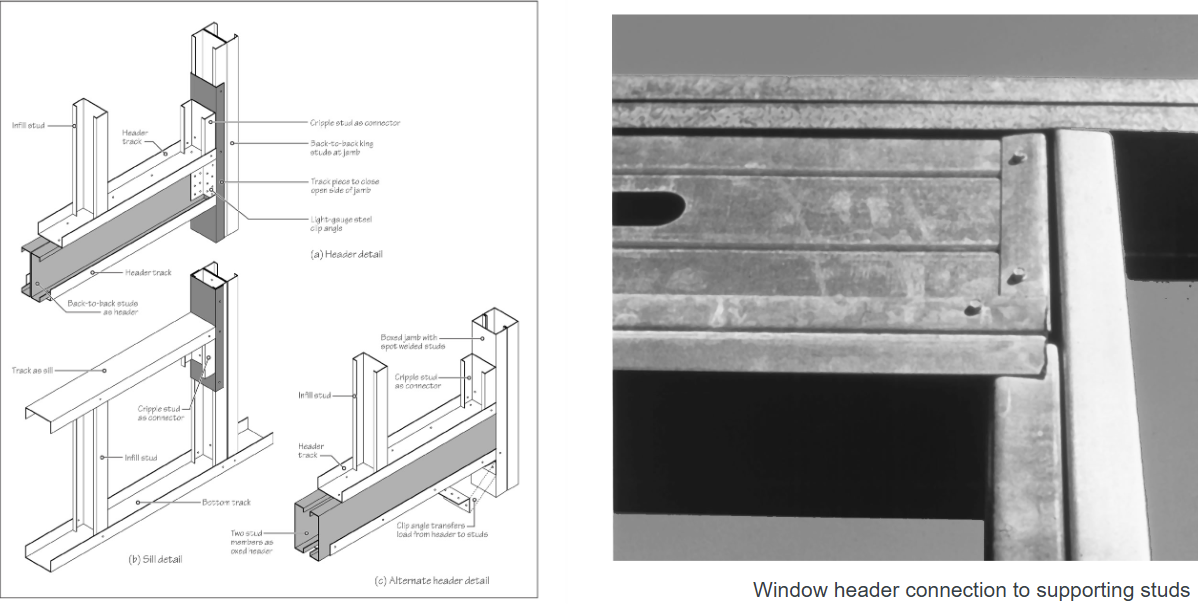
floor joists
in pic
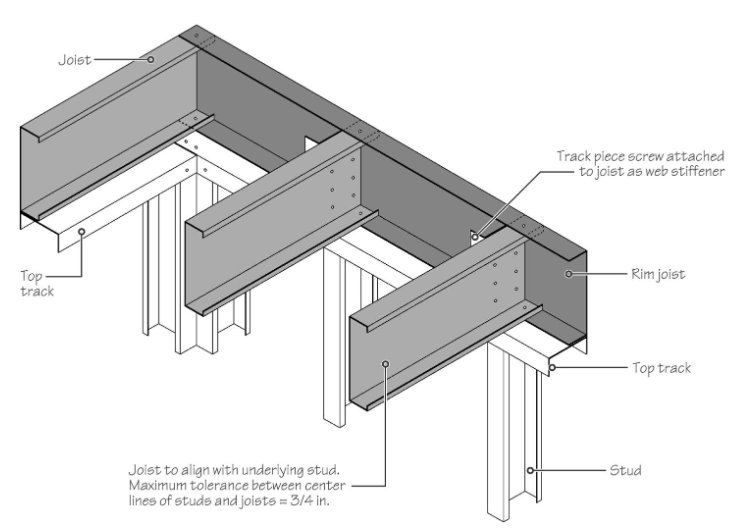
bracing
The slender steel members require bracing at regularly spaced intervals to reduce the tendency to buckle
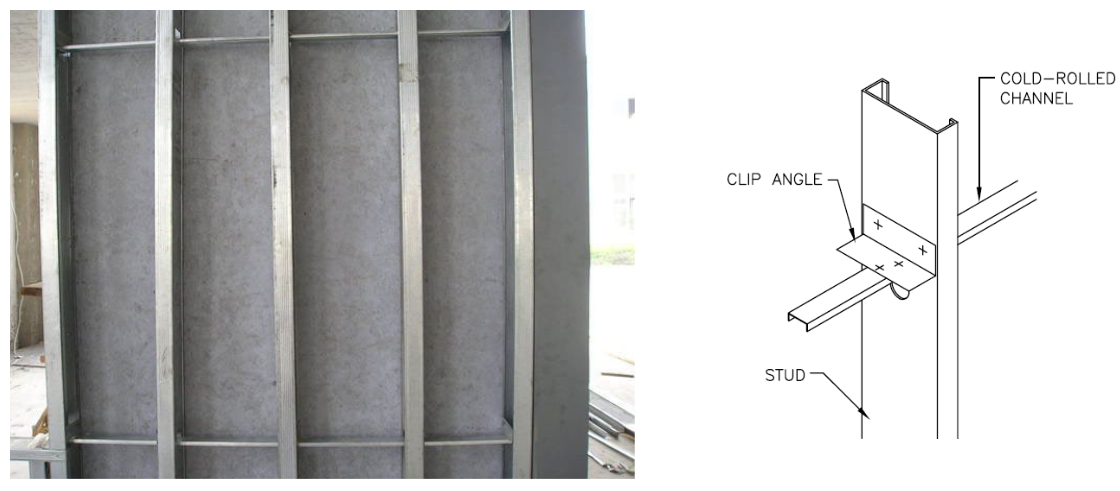
wall framing details
in pic
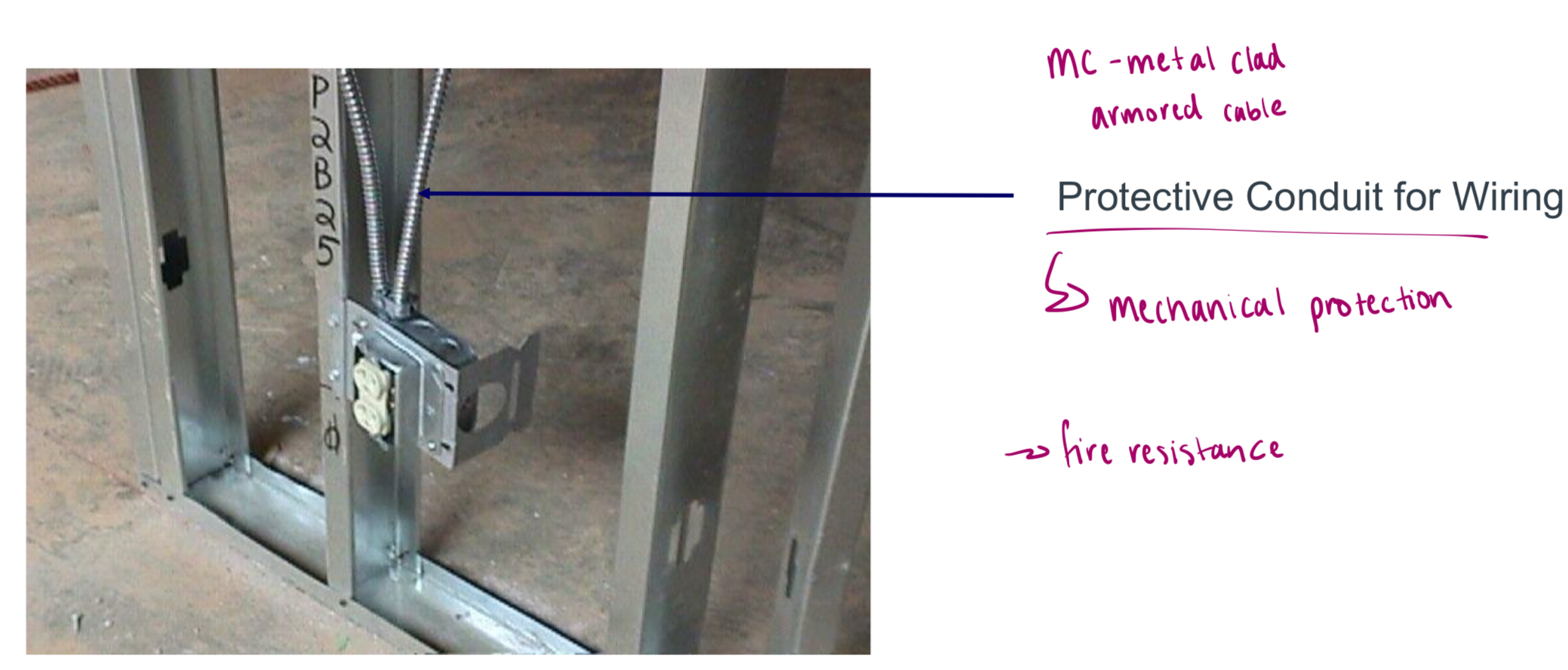
exterior wall
steel shelf pic
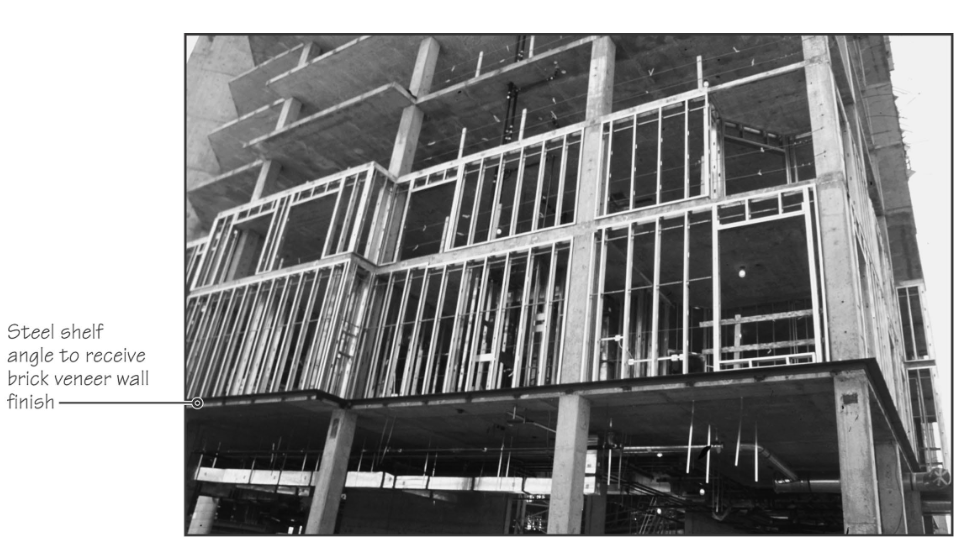
exterior wall pt. 2
brick veneer pic
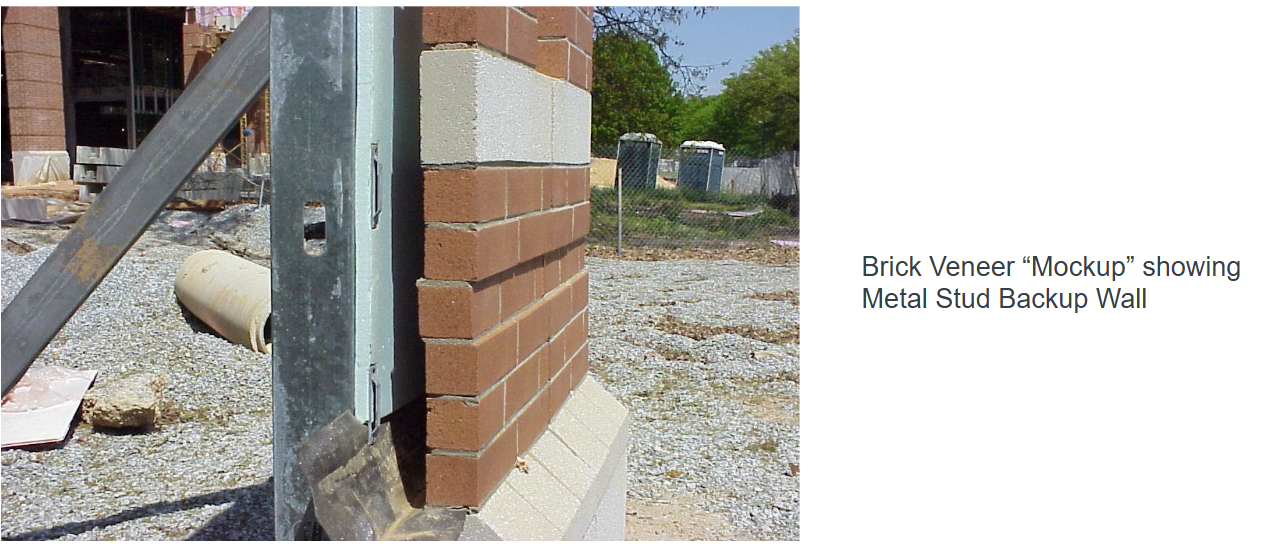
exterior wall pt. 3
channel bracing pic
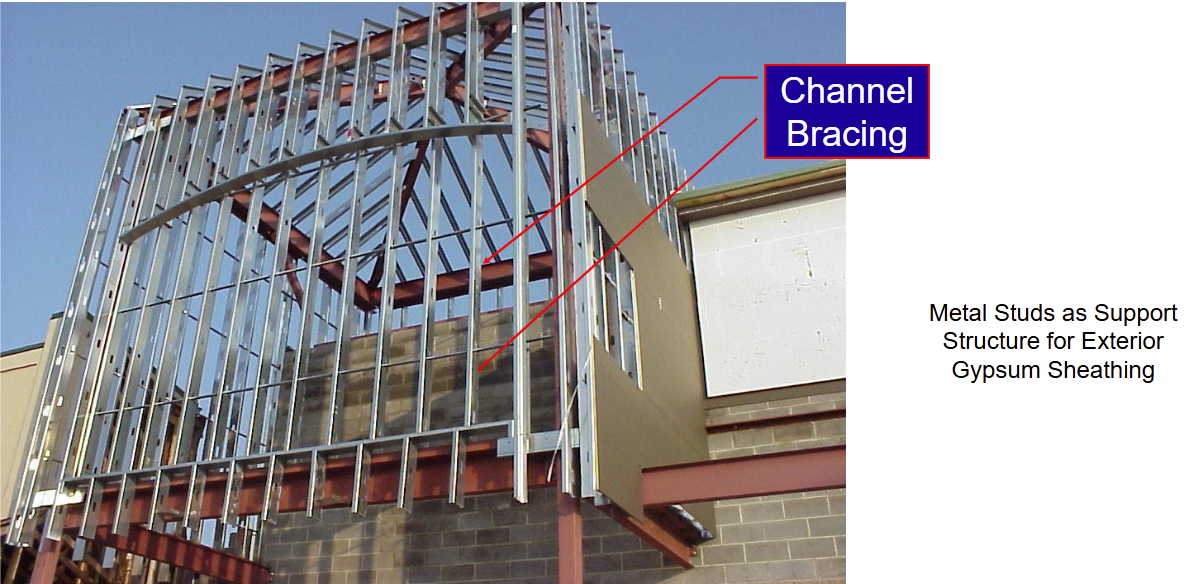
advantages compared to light wood framing
versatile, flexible, simple to construct
noncombustible (not prone to catching fire) and immune to insect attack and mold
dimensionally stable, with consistent
material propertieslighter weight
disadvantages compared to light wood framing
members require more frequent bracing
non-renewable
readily conducts heat, susceptible to corrosion